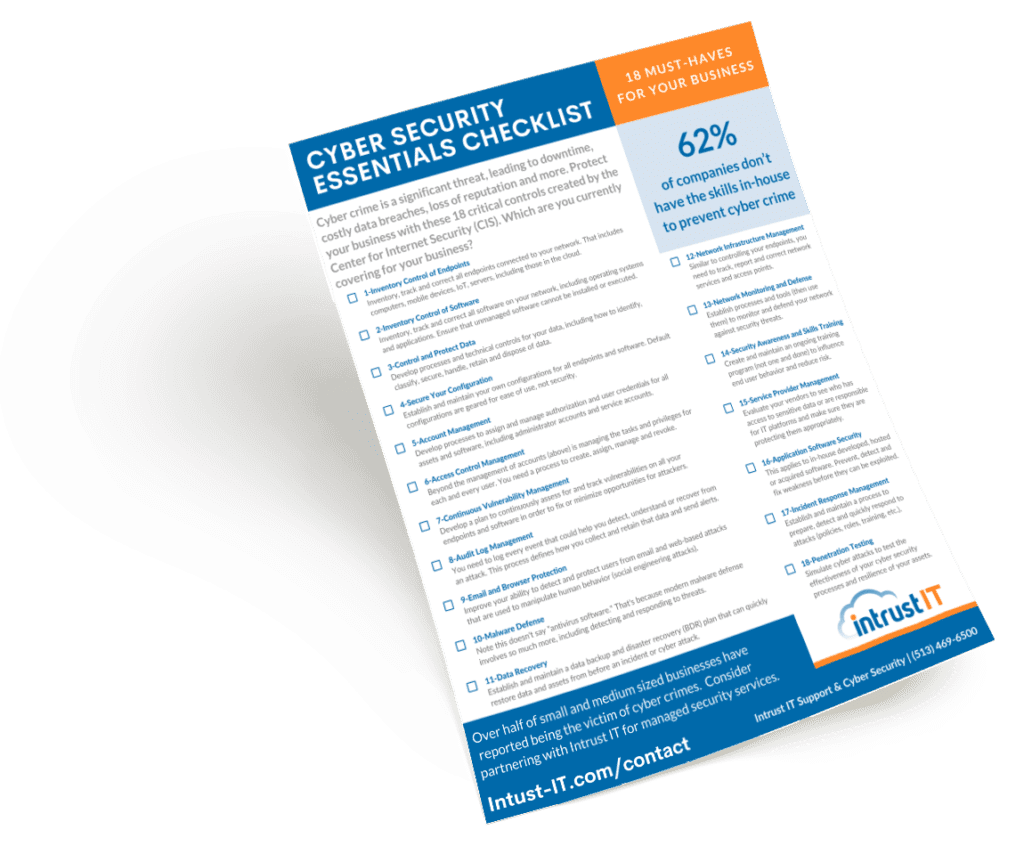Get the Cyber Security Essentials Checklist (Free Download)
Downtime, costly data breaches and a serious blow to your reputation — the potential impact of cyber crime can be significant for any business. Yet most companies (62 percent!) report not having the skills in-house to prevent cyber crime. How does your
The checklist summarizes the 18 critical controls created by the Center for Internet Security (CIS). There are many layers within each control but making sure you have the general category covered is a good start. Get the checklist now.
Get the checklist
Small Business Cyber Dangers Are Real
Over 50%
The percent of SMBs that report being the victim of cyber crime.
50%
The percent of cyber attacks specifically targeting SMBs.
$149,000
The average cost of a data breach for SMBs. (Ransomware average is $133,000.)
66 Days
The average amount of time before a cyber attack is detected.
80%
of small businesses worry about becoming the target of cyber crime within the next six months.
Is Your
14%
Rate their ability to lower cyber risks as “highly effective.”
51%
Have no budget allocated to cyber security.
62%
Don’t regularly update or upgrade their apps and software.
78%
Store valuable or sensitive data AND don’t encrypt their data.
81%
Verify asset locations once a year or even less often.
75%
Don’t have a disaster recovery plan in place.
The Many Methods of Cyber Attack
Malicious actors have a variety of methods to try to access your network, steal your data or disrupt your business — and they keep coming up with new ones. Here are just a few examples:
- Phishing: These convincing-looking emails contain malicious attachments or links to fake sites designed to capture your data or infect your system. There are also variations that start with a text (smishing) or phone calls (vishing).
- Distributed denial of service (DDOS): These attacks target a website, network, server or computer with the goal of taking it offline to disrupt your business.
- Man in the middle (MITM): A bit like “monkey in the middle,” hackers get between users and servers to take control. They can pretend to be you to your users or spoof your IP to access other servers or applications.
- Malicious software (Malware): This includes ransomware, viruses, trojans, worms and other infection types.
- Passwords (Login Credentials): More than 70 percent of passwords are used for more than one system. That means that criminals might just need one to access many systems. This is just one reason why password management and multi-factor authentication are so critical.
- Drive-by: You won’t even notice when this attack happens. You just click on a link or visit a website and your system is infected with malware. The malware doesn’t take actions you can see. It simply runs in the background, often gathering data used in other forms of attack.
And that’s just the tip of the iceberg when it comes to cyber crime methods. Criminals are always coming up with new ones. Make sure your business is well-protected.
Downloading this free Business Cyber Security Essentials Checklist is one step toward better cyber security. In just a few minutes you’ll see if your

